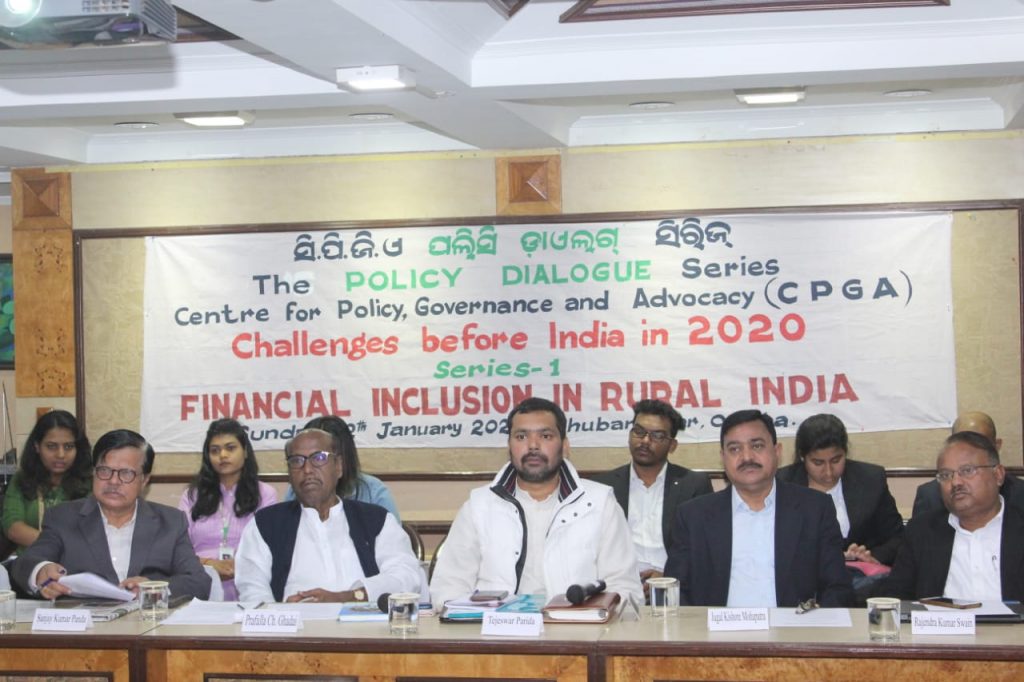Bhubaneswar: In spite of the government’s concerted efforts, experts here believe that Financial Inclusion (FI) of Rural India has remained a distant dream owing to low financial literacy, consumer awareness, and poor gender inequality.
A seminar organised by Centre for Policy, Governance and Advocacy (CPGA), Sunday, at CYSD here saw discussions over the FI of rural Odisha and India which is said to be the key to poverty alleviation. While former Finance Minister, Prafulla Ghadai was the chief guest for the event, the session also saw participation of imminent experts from different financial backgrounds.
According to report presented by Nageswar Patnaik, a senior journalist, FI— which is considered as a critical indicator of development and well-being of a society— was rated good only on paper. As per the reports, about 536 million bank accounts were opened by March 2018 under Pradhan Mantri Jan Dhan Yojana (PMJDY). However, the World Bank states 48 per cent of the country’s bank accounts have had no transactions in the last one-year.
“Another key component of FI is to pull the poor community out of the net of exploitative moneylenders. However, according to the International Monetary Fund (IMF) only 13 per cent of Indian adults borrow through formal channels. Hardly 35 per cent of Indian farmers make use of institutional loans. The rest primarily rely on alternative sources, including moneylenders and chit funds, paying high interest rates,” the report stated.
Furthermore, another report mentioned that Odisha has a lower per capita income with higher poverty ratio of 37% as compared to national average of 29.8%. The state also ranks low at the 22nd position in terms of Human Development Index (HDI). Moreover, studies indicated that while the FI of seven districts was below average, two districts in Nabarangpur and Malkangiri was extremely poor.
“Financial literacy is the biggest challenge. It is not reaching everyone and many are excluded in accessing financial support too,” Ghadai said. Citing the plight of the slum dwellers, Ghadai advocated change of mindset of policy makers, bureaucrats, bankers and common people towards a more compassionate approach to the less privileged.
Experts were also of the opinion that while the government has focused more on E-banking a lot of villages in the country are yet to get internet connectivity. As a result, there has been a decline in the number of newly opened bank branches – from 8,749 in FY15 to 3,948 in FY18.
“Urban poverty is far more degrading and livelihood security for poor is very unstable. Studies say that average rural debt is Rs. 92,000. Even in this age, a large number of slums and rural household are dependent on informal sources for finance. Thus it is imperative to educate them and reach their doorsteps,” said Jugal Kishore Mohapatra, former Finance Secretary Odisha.
